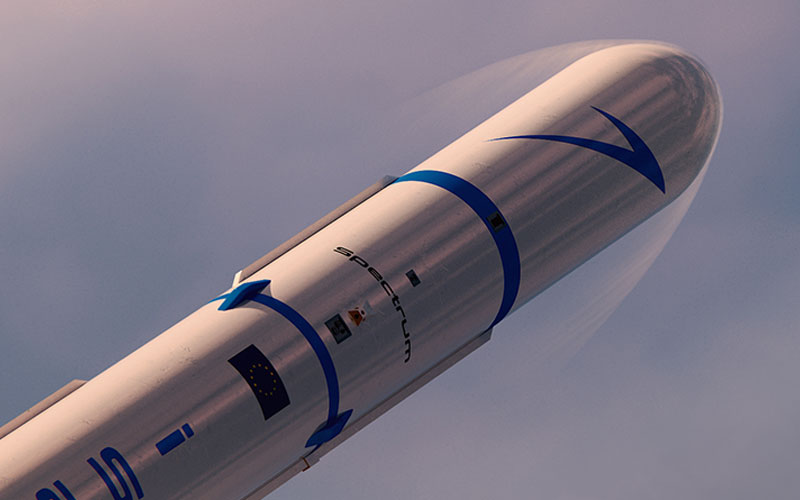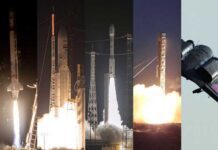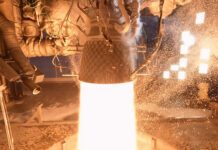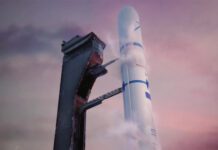
German launch startup Isar Aerospace has secured a €155 million Series C funding round. The launch startup has now raised more than €300 million since its founding in 2018.
This latest Isar funding round was backed by existing investors Earlybird, HV Capital, Lakestar, Lombard Odier, Porsche SE, UVC Partners, and Vsquared Ventures and two newcomers in 7-Industries Holding and Bayern Kapital via its ScaleUp Fund. Porsche SE and HV Capital will join Isar’s advisory board with 7-Industries Holding joining in an observer capacity.
Isar will utilize the new funding to push ahead with work toward the maiden flight of Spectrum. It will also be used to ramp up production and build on the company’s automated production capabilities. Speaking to European Spaceflight, Isar CEO Daniel Metzler explained that ramping up production is vital to ensure it could adequately service its customers.
“When we take a look at our customers, especially throughout the last two to three years, I’d say the ambitions of satellite constellation manufacturers have grown significantly, and thus the number of requested flights with us. And so, in order to serve the market, we also need to make sure that we can actually manufacture enough vehicles. And so in that case, we really want to make sure that we have the in-house capabilities to build as many vehicles as is needed to actually serve our constellation customers.”
With this latest round of funding, Isar has cemented its position as the most well-funded launch startup in Europe. To put that into context, the next most successful is Orbex with just over €114 million raised since 2015. No other European launch startup has even cracked the €100 million mark.
Preparations for a maiden flight
Isar’s 28-metre Spectrum launch vehicle is designed to carry up to 1,000 kilograms to LEO. The company is targeting the second half of 2023 for the rocket’s maiden flight, which will be carried at Andøya Space in Norway.
According to Metzler, the construction of the launch facility and, in particular, the launchpad is currently underway and should allow the company to host a launch at the Norwegian facility by the end of the year.
“Right now the construction is underway, and we’re actually starting to integrate our systems on the launchpad. We’ve finalized the design of the launch site and of the launch pad and all the components are now either being manufactured or in the process of being delivered. I think it’s in line with the development timeline that we have on the vehicle level and if things go right, we will be to host a launch towards the end of the year.”
In addition to working on the launch facility, Isar began discussions with the Norwegian government regarding launch licenses last year.
“This is an ongoing discussion. Norway has never hosted an orbital flight. On the other hand, they have hosted many suborbital launches, some to significantly high altitudes. So, when it comes to flight safety, there is some transferable knowledge that exists there, which for us was one of the reasons that we chose Norway.”
While preparation in Norway continues, the company recently revealed that it is also well into testing its Aquila rocket engine which will power both the first and second stages of Spectrum. In a recent press release, the company announced that it had completed 124 hot first tests at its engine test facility in Sweden over a period of 12 months.
According to Metzler the company chose not to share that it had started engine testing because the team had their heads down focusing on trying to meet the company’s aggressive timeline. When asked why it chose to eventually share the information, Metzler explained that the one-year testing milestone offered the company a chance to reflect on its progress.
Isar is currently working towards a test of a fully integrated Aquila rocket engine. Once that’s completed, the company will move to integrated tests of its first and second stages, which will be completed at its launch facility in Norway.
“We actually already started parts of the manufacturing for a maiden flight vehicle,” said Metzler. “So when it comes to fairings, structures, electronic units, etc. Basically, we kicked off maiden flight vehicle manufacturing on the systems that are already ready. We’re doing some more iterations on the system that are not yet fully ready. But yeah, I guess it’ll take a few months until we actually go towards stage level testing, and then as fully we are successful with that, we will go into a first flight.”
When asked if a late 2023 maiden flight of Spectrum was feasible considering the work that still needed to be done, Metzler explained that the timeline was “realistic”.
“It’s realistic. Well, if we blow up more things than planned, then we’re not going to make it,” said Metzler. “But as of today, I think it’s a realistic plan. Still, of course, the remaining steps of our development have to go right. But I think it’s a realistic plan that we have ahead of us that we can achieve. And the last few months have given us a lot of confidence in our planning that we have for the remainder of this year.”
If Isar manages to successfully conduct a maiden flight where so many others have failed in 2023 alone, it will then begin to service an already impressive launch manifest. According to the company, its first year of operational flight is already fully booked. When asked how many flights that represented, Metzler explained that it would “probably be a single digit number of flights in the first year or two of operations.” He explained that it was too early to be any more specific than that.







